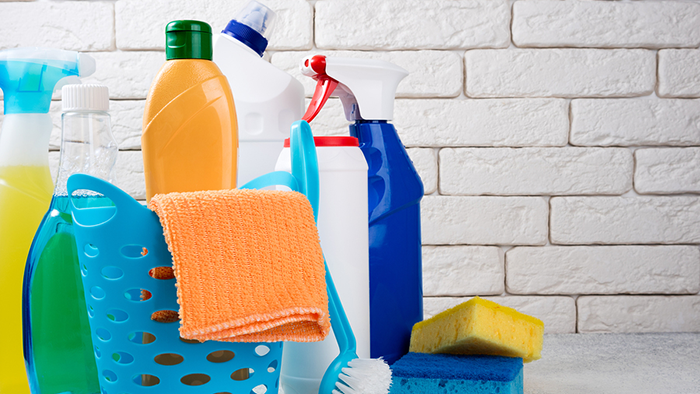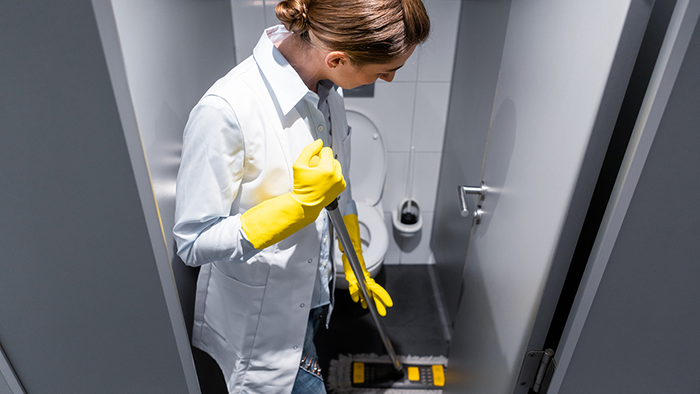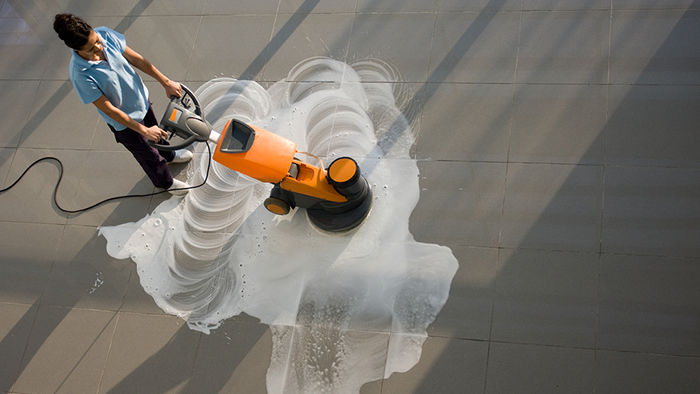Facility cleaning is a necessary expense. The good news is that it’s generally a consistent and predictable process, so it responds well to thoughtful, calculated improvement. It’s worth every effort to make it as streamlined, efficient and effective as possible. The facility manager who can ensure reliable, satisfactory results on a tight budget will be a valued asset on any management team. In every industry – offices, public buildings, schools, residential buildings, or other facilities – consistent, budget-minded cleaning is a competitive advantage.
Cost savings can be broken down into two major categories: labor and material. Here, we offer 7 strategies focusing on both sides of the cost equation: product and worker productivity. Follow the links at the bottom of the page for more ideas.

Economize on Cleaning Products and Equipment
- Choose versatile, multi-surface tools and products. Cleaning and Maintenance Management, a trade magazine for the industry, says, “Did you know that most facilities can be cleaned daily with as few as two to four cleaning products? Consolidating your products reduces the need to acquire, manage, train, distribute and store duplicate cleaners and provides the opportunity to eliminate potentially unsafe, unsustainable and unnecessary products. Replacing duplicates with more efficient, multi-purpose products can also reduce the amount of time spent training workers, help supply required personal protective equipment, ease ordering and receiving shipments and decrease the need for multiple vendors.”
- Buy concentrated cleaning solutions, to save on shipping costs and storage space.
- Buy large volumes such as five-gallon buckets for reduced cost per volume.
- Invest in quality equipment and tools. Bucket-less mop systems, backpack vacuums and similar innovations can dramatically increase worker affiance and potentially improve employee health and safety, saving labor costs.

Reduce Labor Costs for Cleaning
- Train staff on the use and care of all cleaning equipment, to maximize the lifespan of these tools. Accept that training is an on-going process. Utilize multiple strategies, including videos, manuals, wall charts, and one-on-one sessions. Emphasize training and standards to crew leaders. Workers who understand the tools, products, tools, cleaning sequences and correct procedures will do a better job, and stay safer on the worksite.
- Evaluate your total cleanable square footage for submitting to commercial cleaning companies. This is usually 15-25% less than total square footage of the building, because many spaces such as backhallways, file rooms, data rooms, and storage areas should not be on the regular cleaning schedule. Cleaning services base bids on the “cleanable square space” and rely on formulas to calculate the FTEs (full-time equivalents) necessary to clean. There are some standards which can help you assess the FTEs your facility will require: ISSA’s 447 Cleaning Times, ISSA’s Info Clean or APPA‘s estimates of clean.
- Consolidate Services: The fewer vendors you need to deal with, the better – in terms of both cost and results. If you have separate vendors providing floor cleaning and general cleaning, try to consolidate. When you require deep cleaning, get a bid from your usual service. With fewer points of contact to deal with and fewer entities needing access to the facility, the likelihood of snafus is greatly reduced.
If you would like to explore how our team can help reduce your operational costs, simply click the link below to schedule an exploratory meeting.
https://www.palmettocommercialservices.com/blog/5-ways-to-save-money-on-your-commercial-cleaning-costs
https://www.cmmonline.com/articles/optimizing-facility-cleaning-operations-to-reduce-labor-costs

